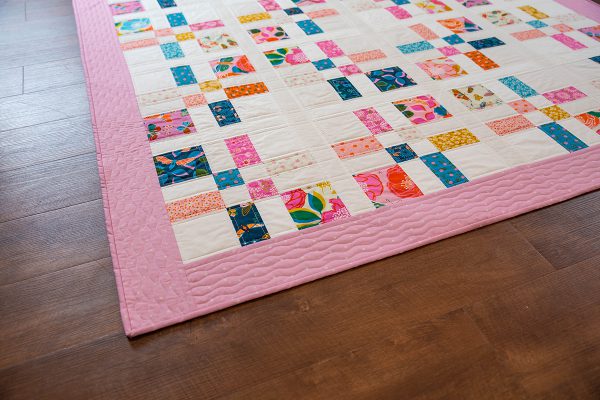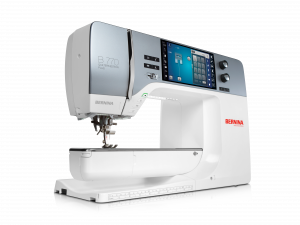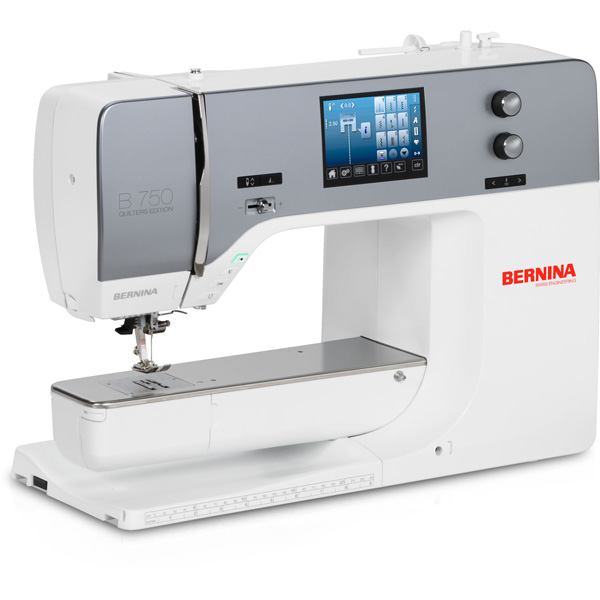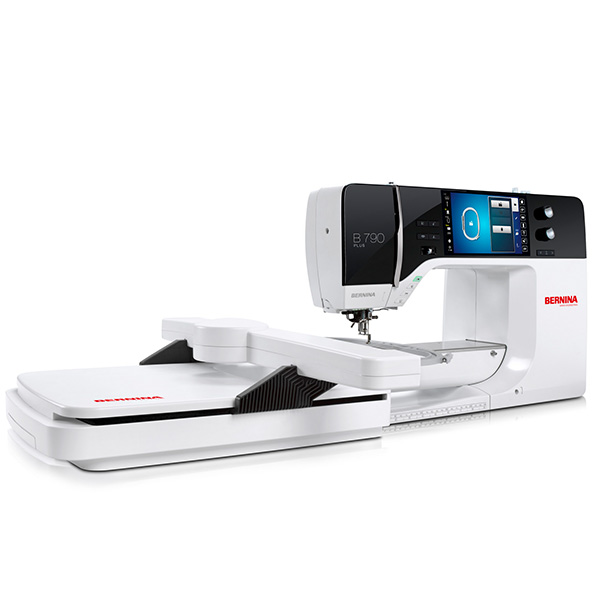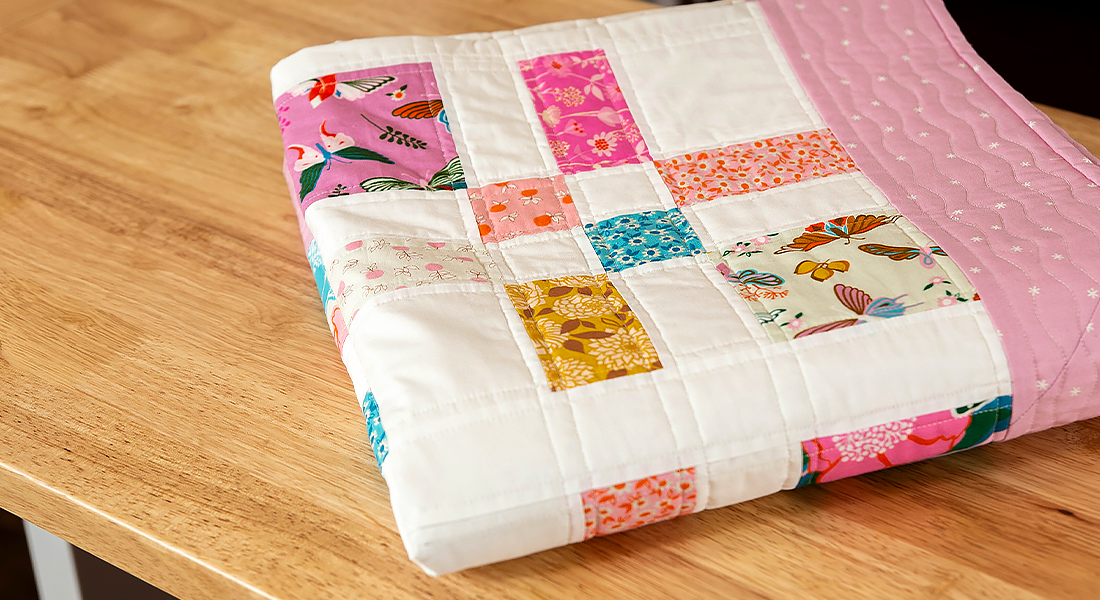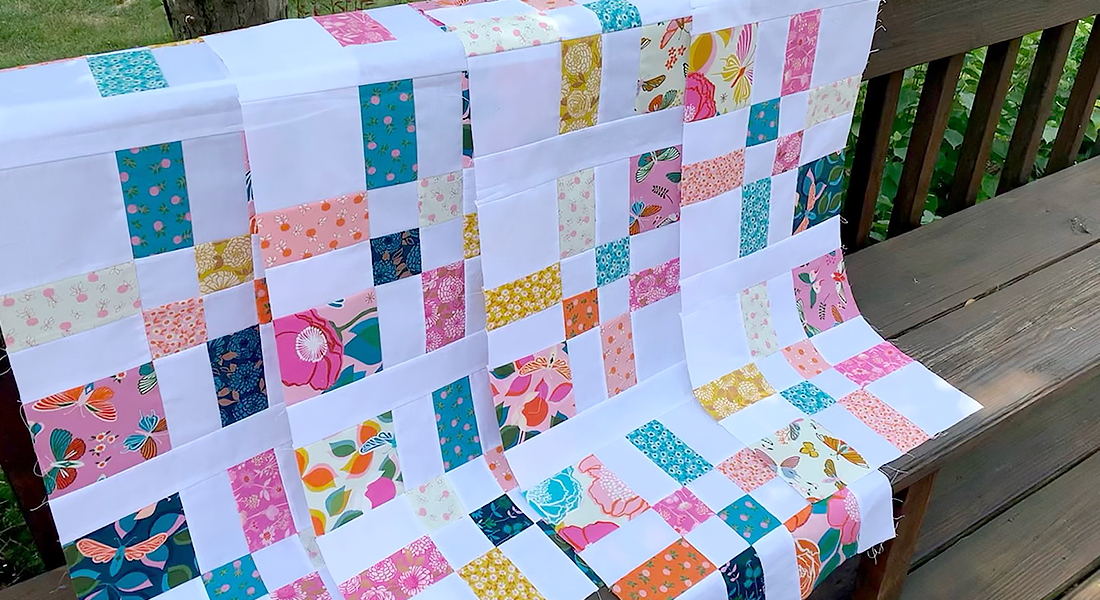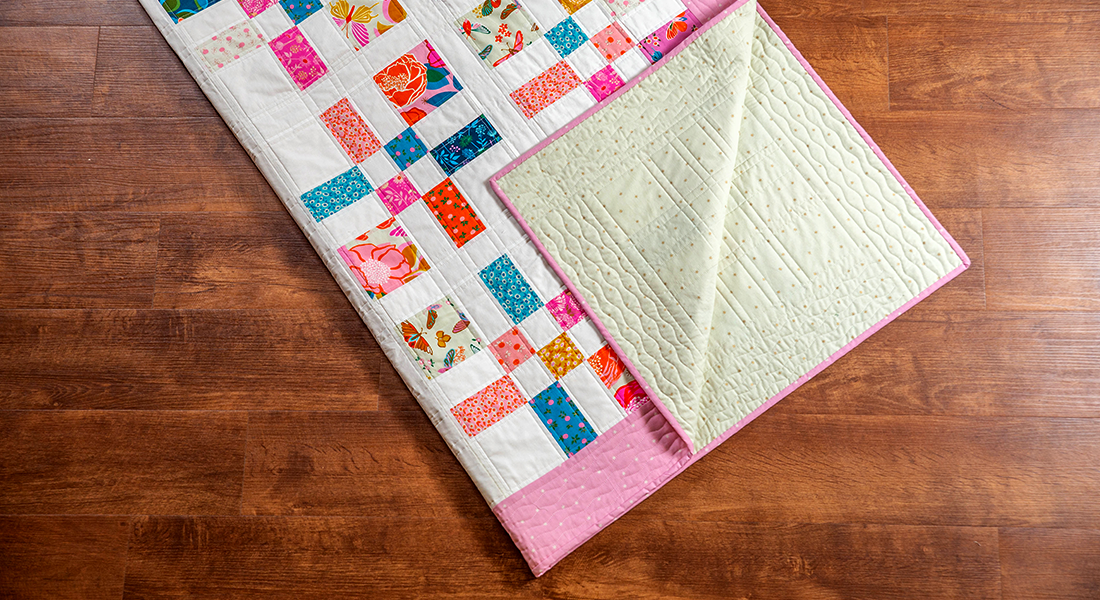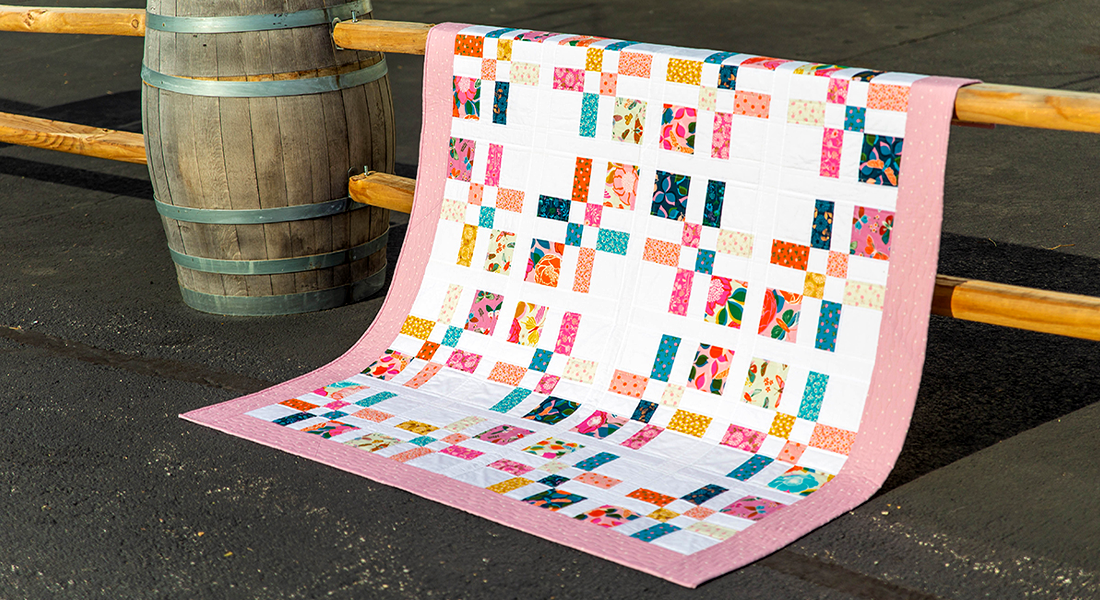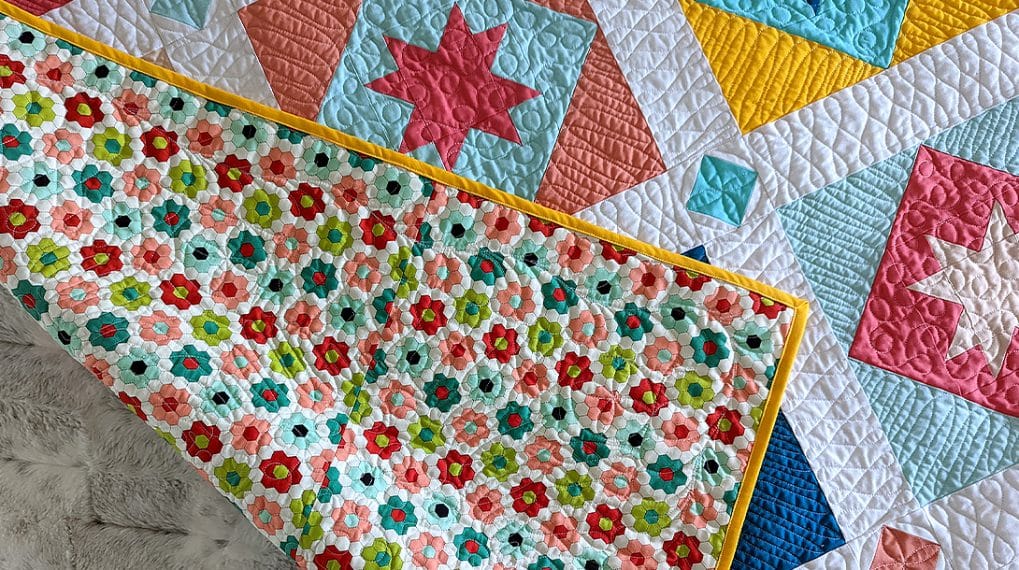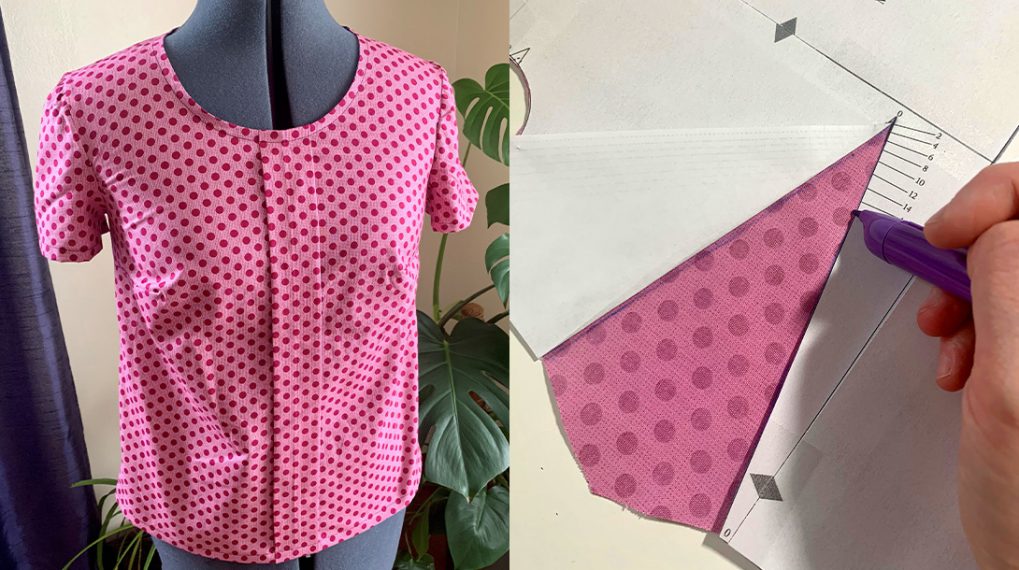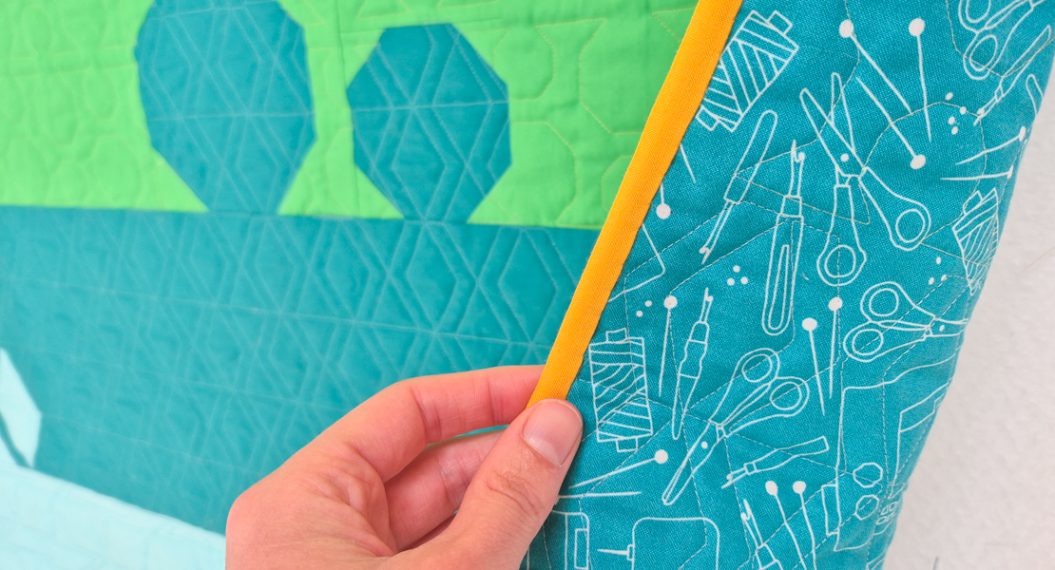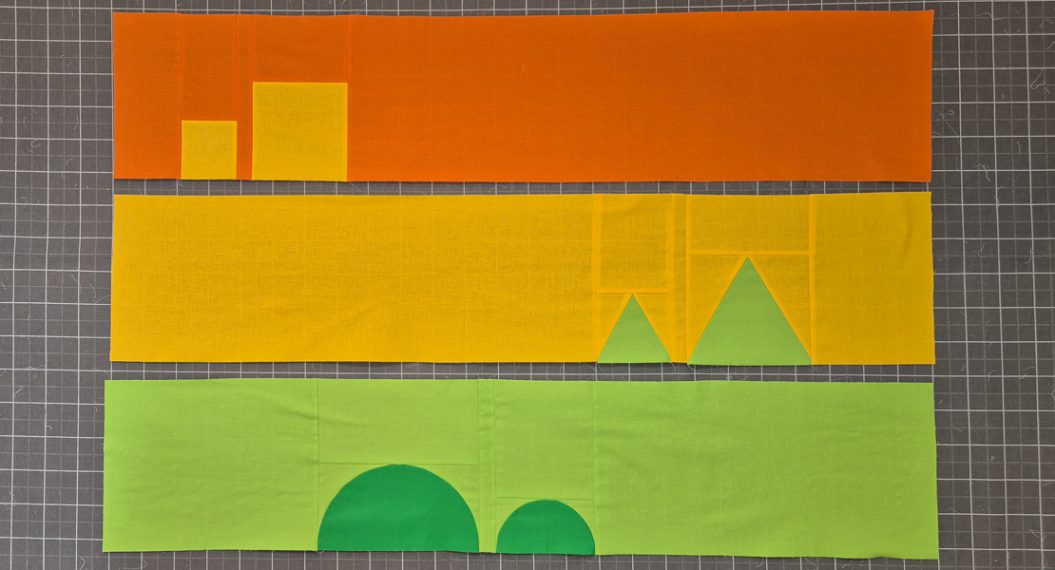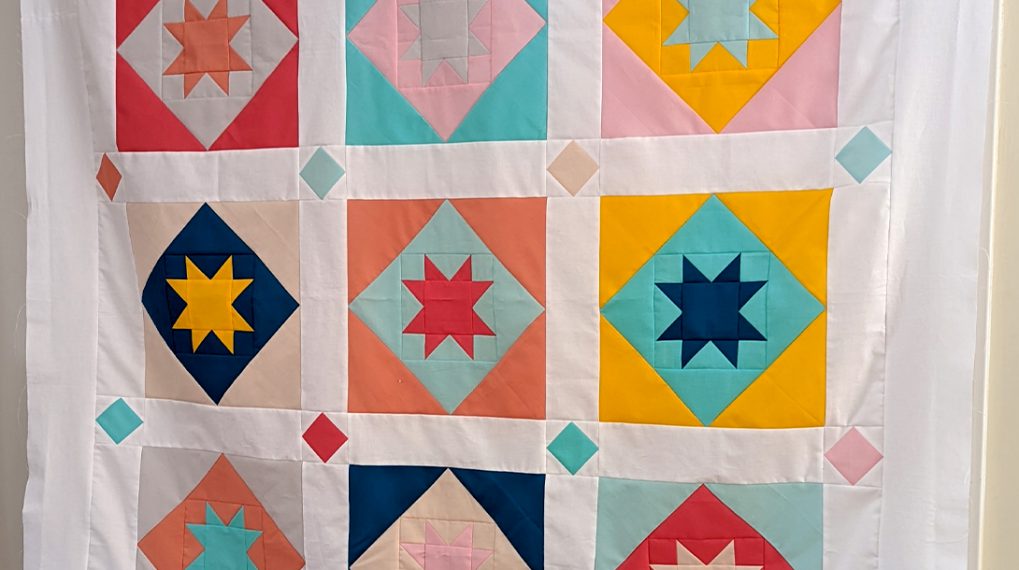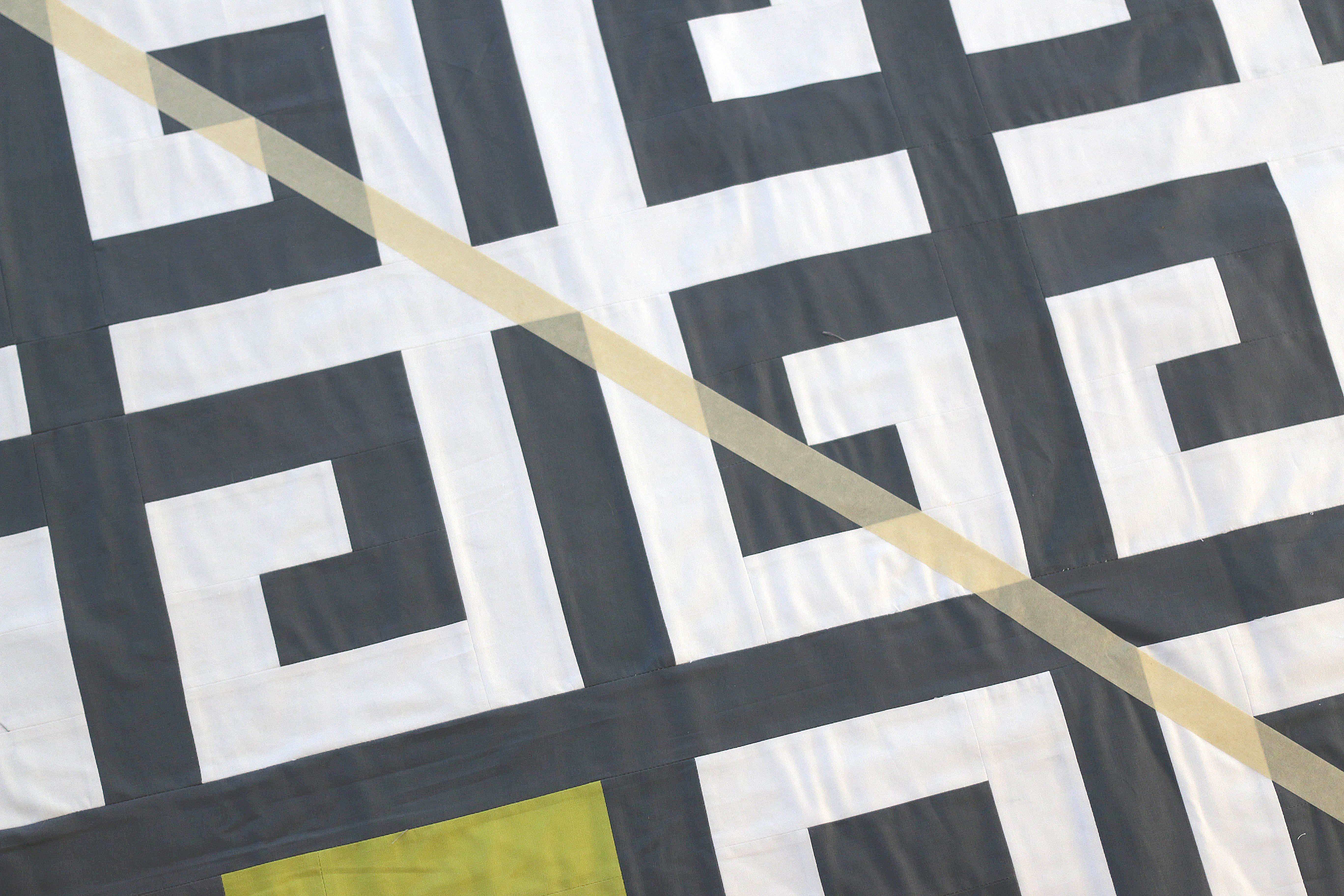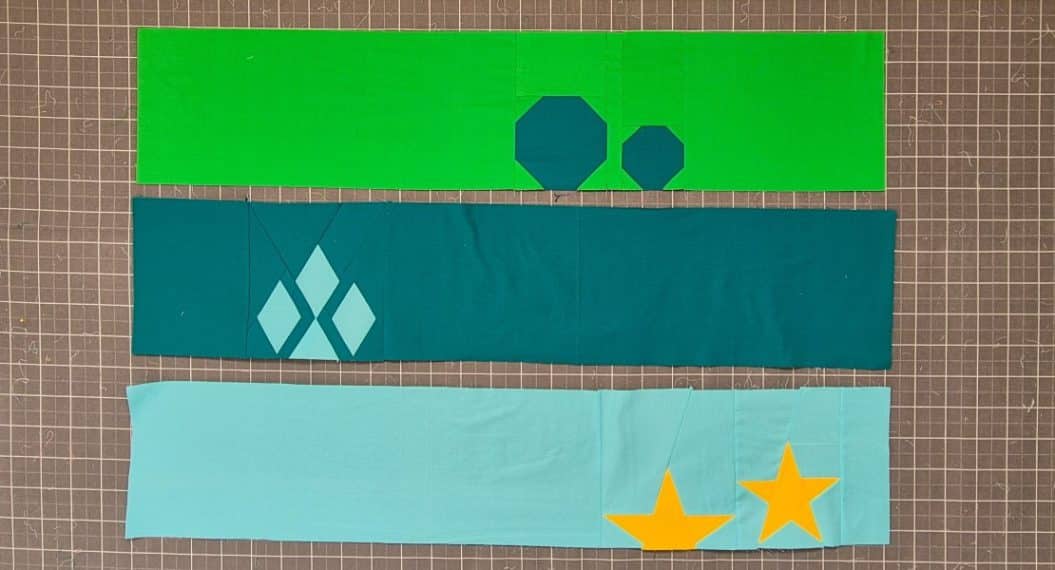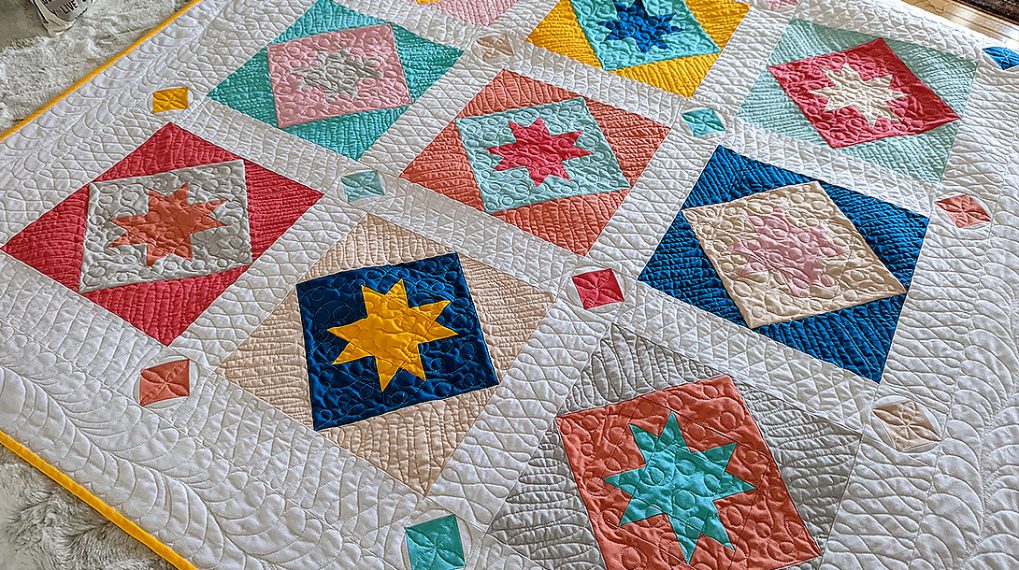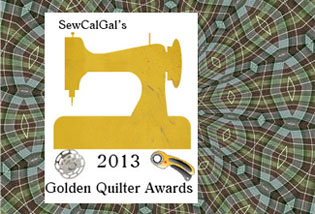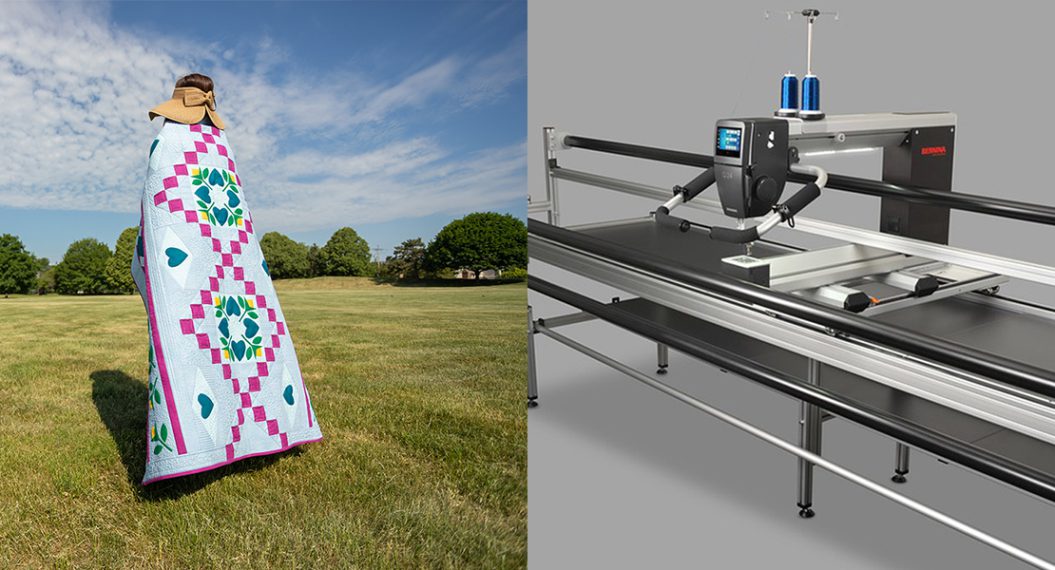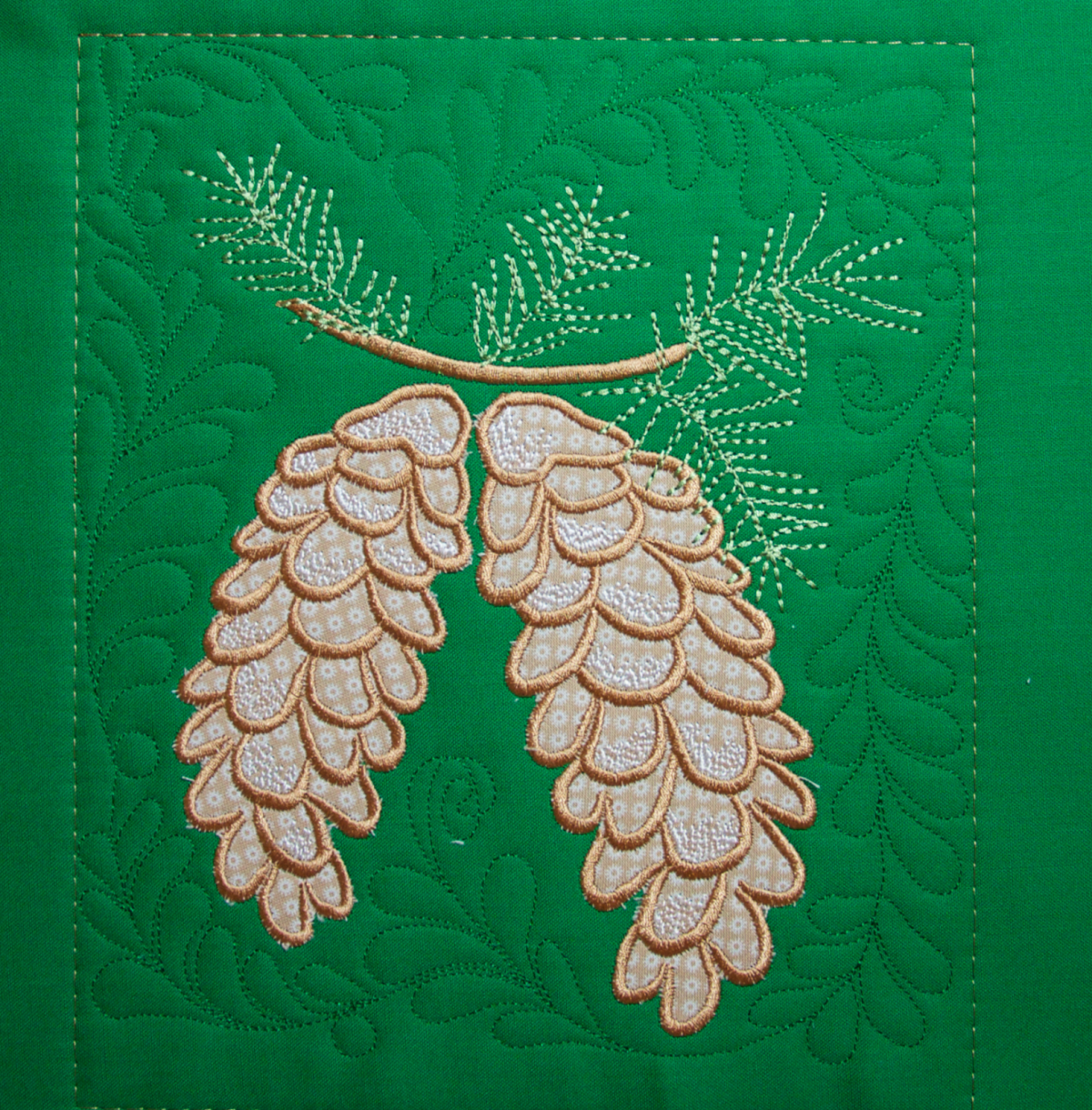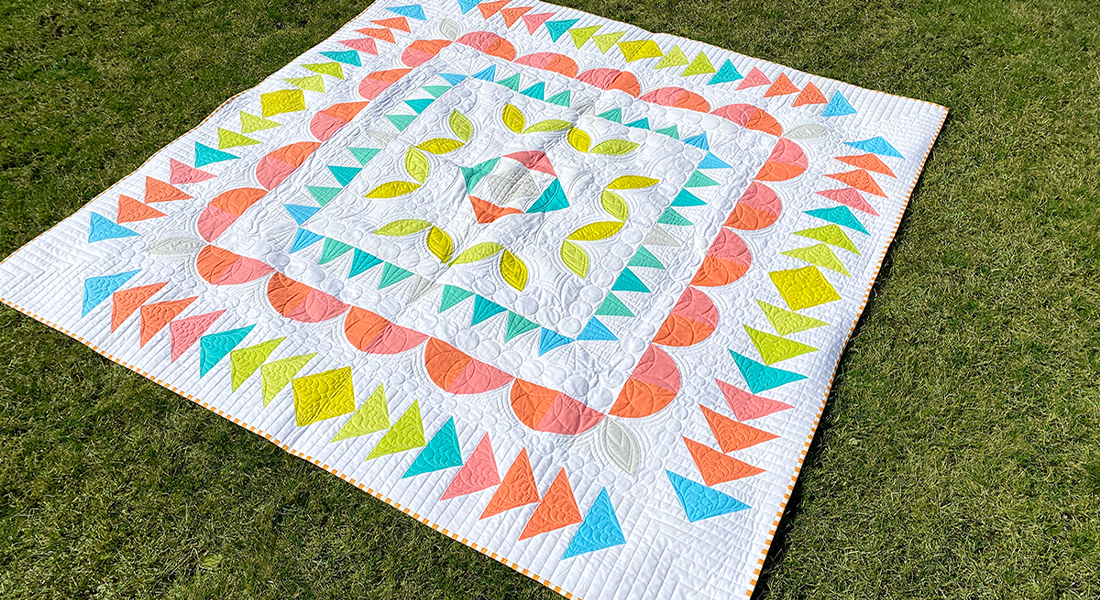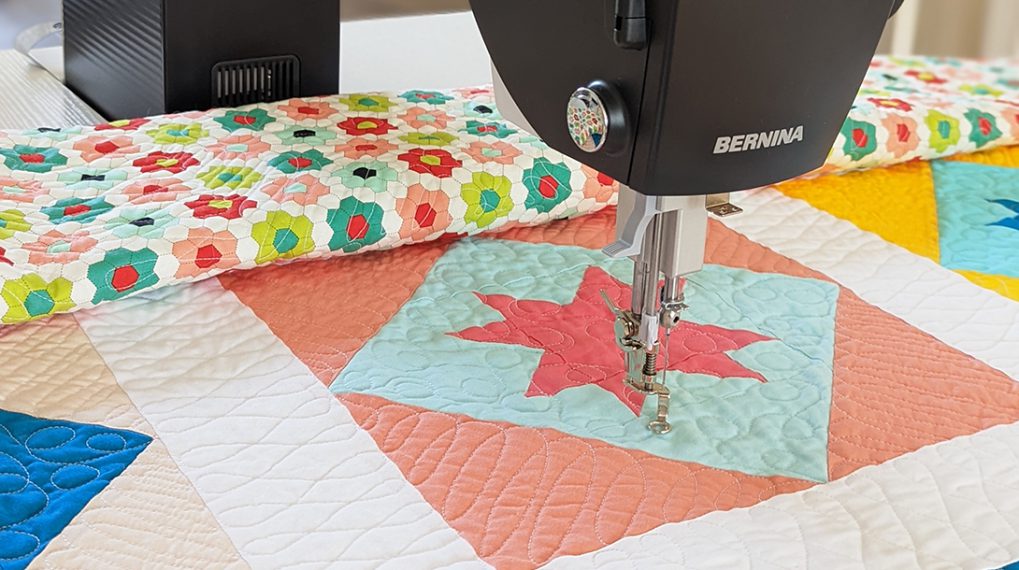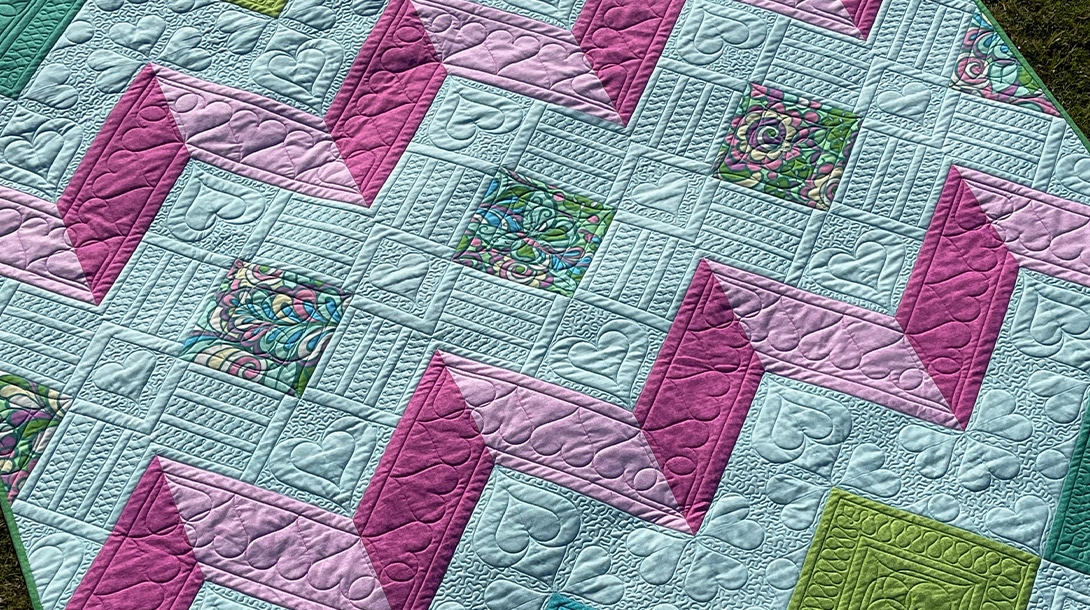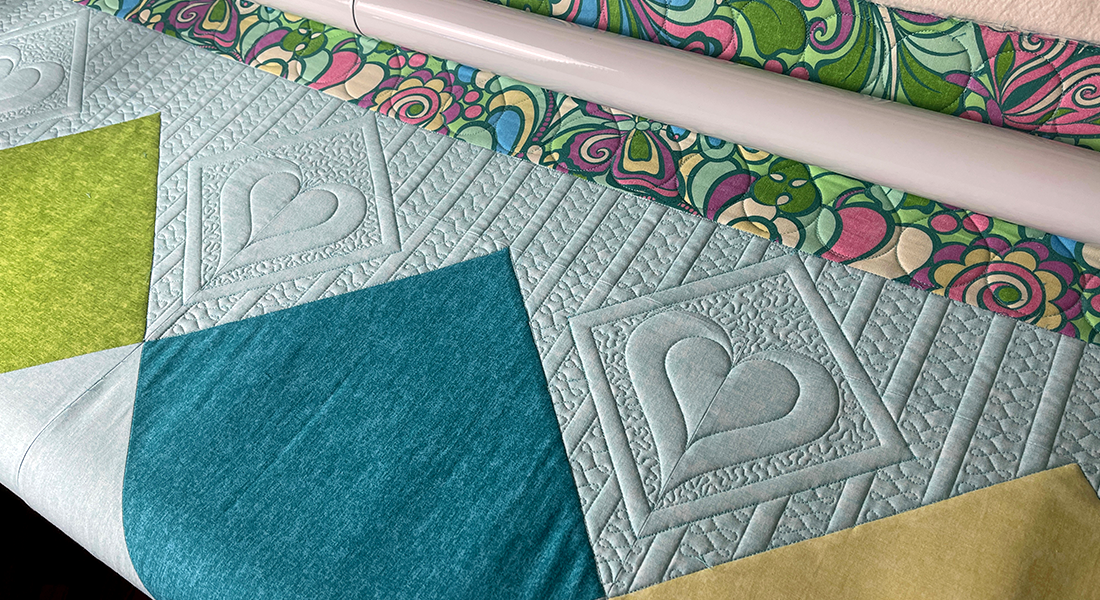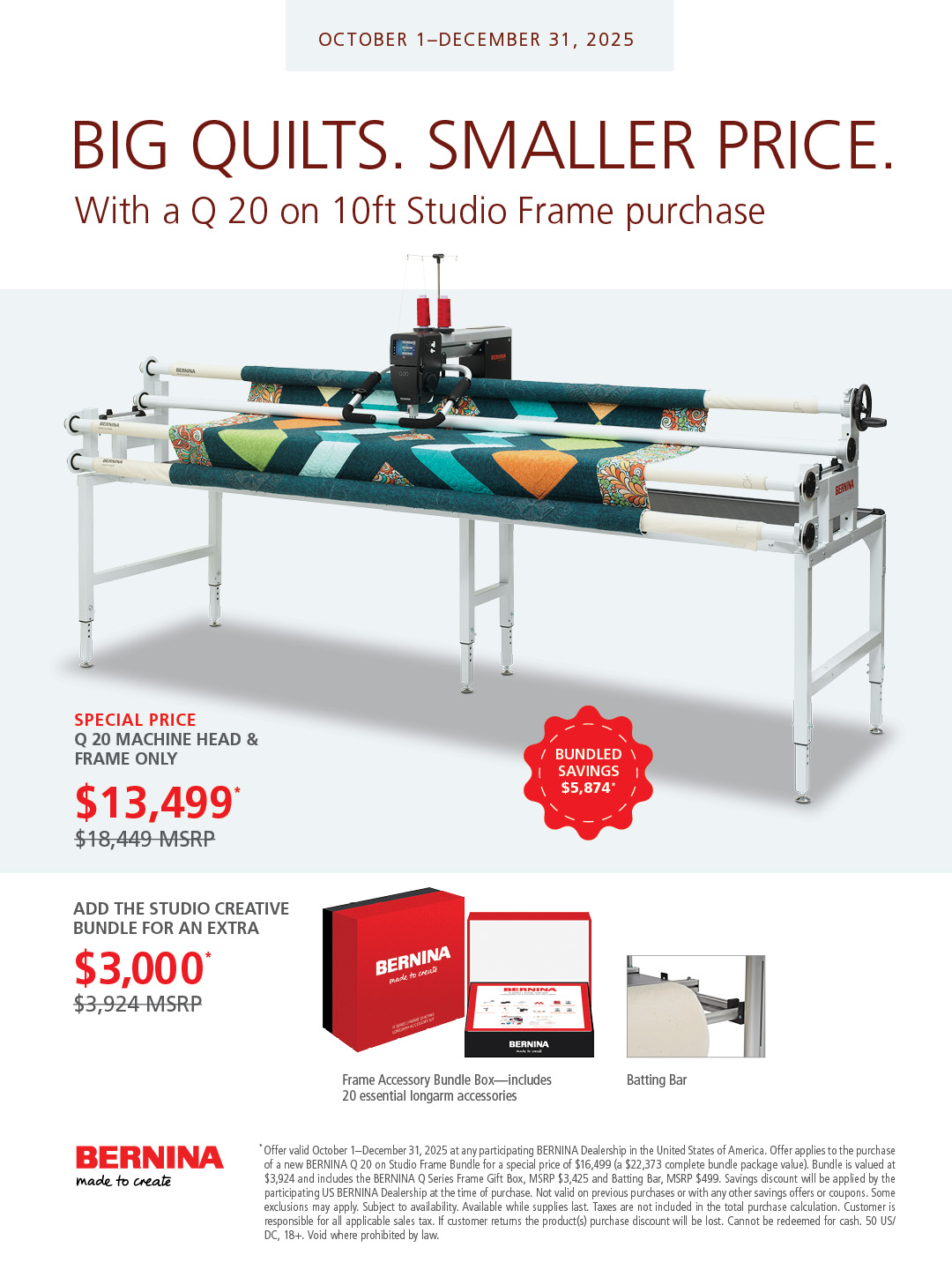Stay Gold Quilt Along, Part 4: Finish the Quilt Top and Quilting Prep
There is excitement in the air! We are halfway through our Stay Gold Quilt Along and ready to finish piecing the quilt top and prepare for the quilting process. Woohoo!
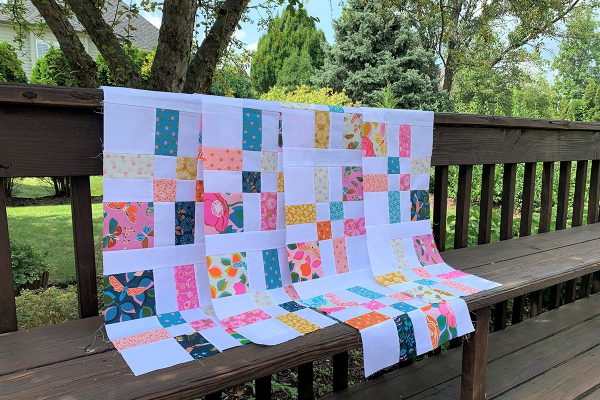
If you are just joining us or need to catch up, no worries! Follow the links at the end of this post to easily find the previous QAL posts.
At the end of Week 3, we completed our rows and pieced together 4 sashing strips measuring 54 1/2” x 2 1/2”. Now it’s time to sew the sashing strips in between the rows. The white strips are shown below in gray. Notice how they are between the rows, but not on the top or bottom of the quilt.
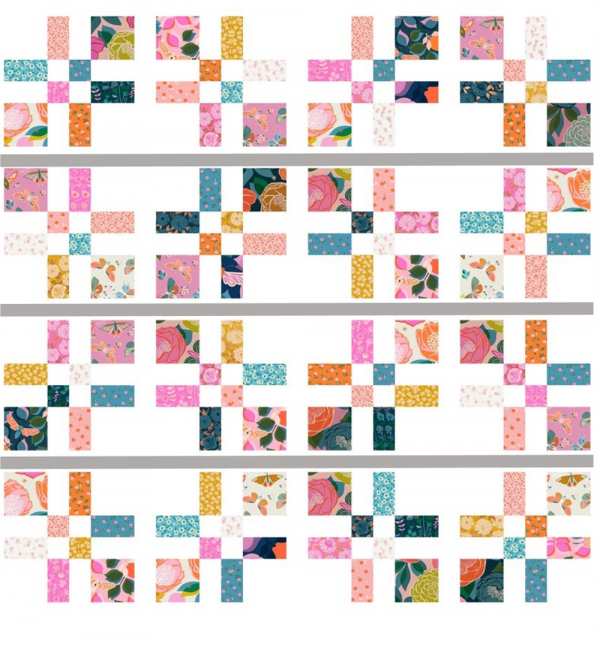
First, fold one sashing strip in half and mark the center. Do the same to mark the center bottom of Row 1. Place the sashing strip along the bottom of Row 1 with right sides together matching the center marks.
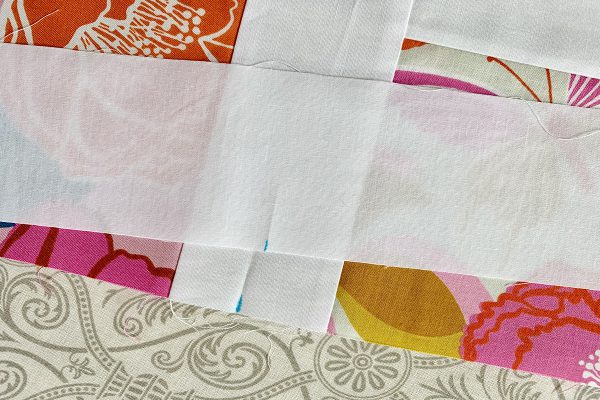
Pin.
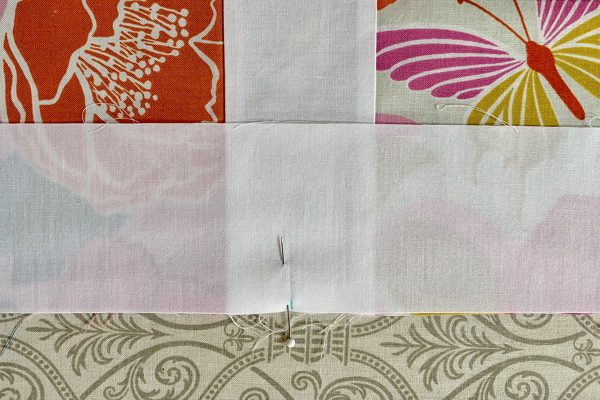
Then place a pin at each end.
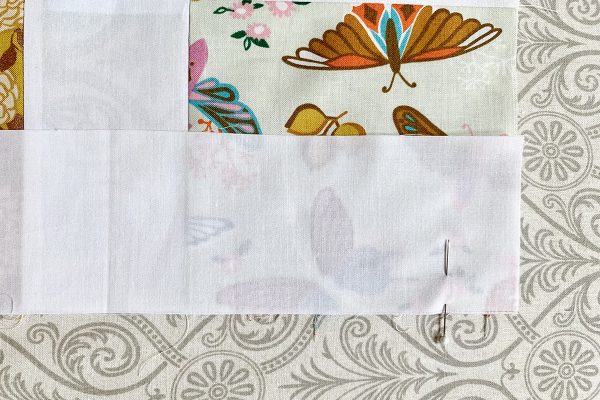
Next, place pins in between every 2”-3”.
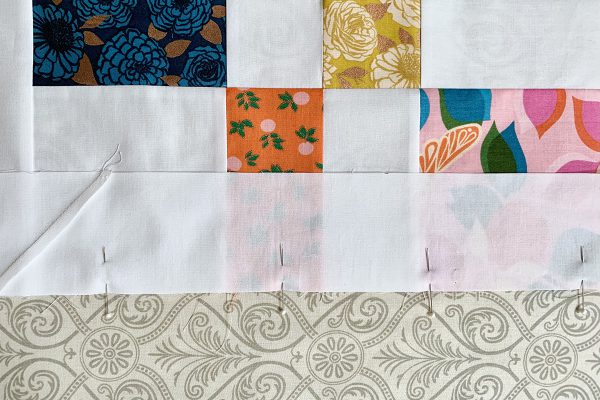
Now sew making sure not to sew over pins. I get really close to my pins but never sew over them.
Take Row 2 and mark the top center. Place the previously stitched 07_sashing strip along this row matching the center marks. Pin the same way and sew.
Press seams toward sashing. Big smile!
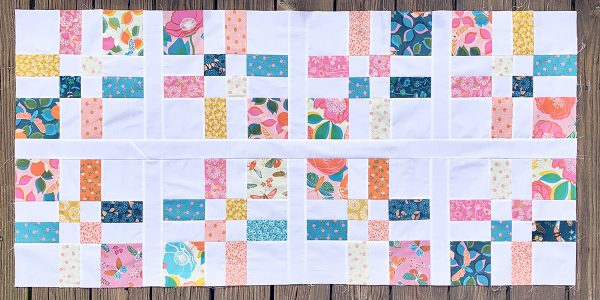
Follow the same process using a sashing strip to sew Row 3 and Row 4 together.
Now combine the two large sections together and you guessed it – in the same way. Take the last sashing strip and mark the center. With right sides together and matching centers, pin and sew sashing strip along the bottom of Row 2. Then, match centers, pin and sew along the top of Row 3. Press seams towards sashing. And just like that, you have your quilt top – minus the border! Hold your breath for my outdoor quilt picture . . .
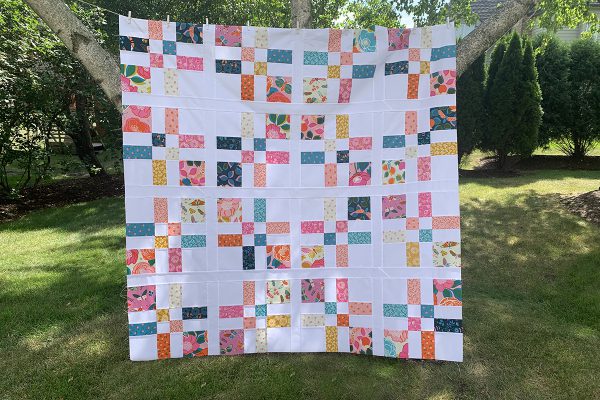
Borders
Find your Spark fabric. Cut fabric into six strips that are 4 1/2” wide by WOF. Save extra fabric for the binding. Join the six strips together in the same way you joined the long sashing strips. Remember? Sew two strips together at a 45-degree angle, trim excess and press.
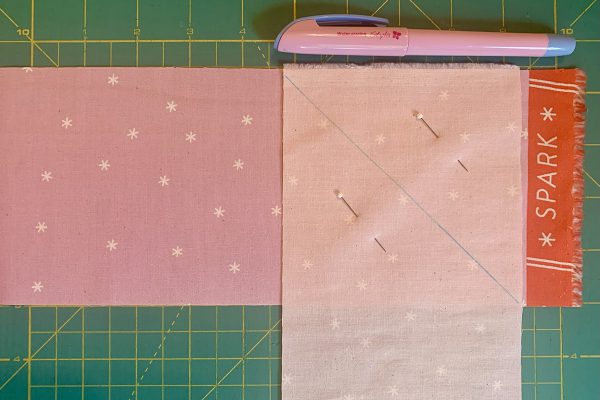
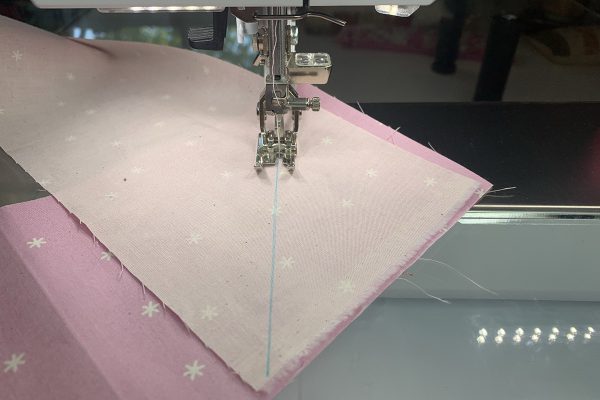
Remember to stitch a hairline to the right of the marked line: 1/4” scant seam allowance + fold-over allowance = 1/4” seam allowance
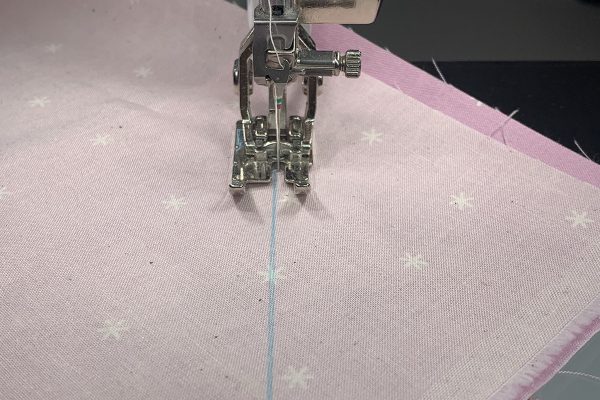
Beautiful!
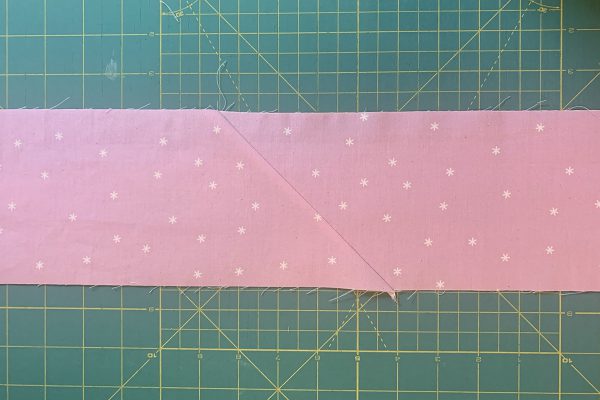
After you have sewn the strips together, cut borders to the following measurements:
- (2) 4 1/2” x 54 1/2”
- (2) 4 1/2” x 62 1/2”
Mark the center of each border strip. Mark the center on each of the four quilt sides. Starting with the shorter strips, pin one along the top and one along the bottom of the quilt in the same way we added the long sashing strips. First, match the centers and pin; then, pin the ends; and lastly, pin every 2”-3”. Stitch.
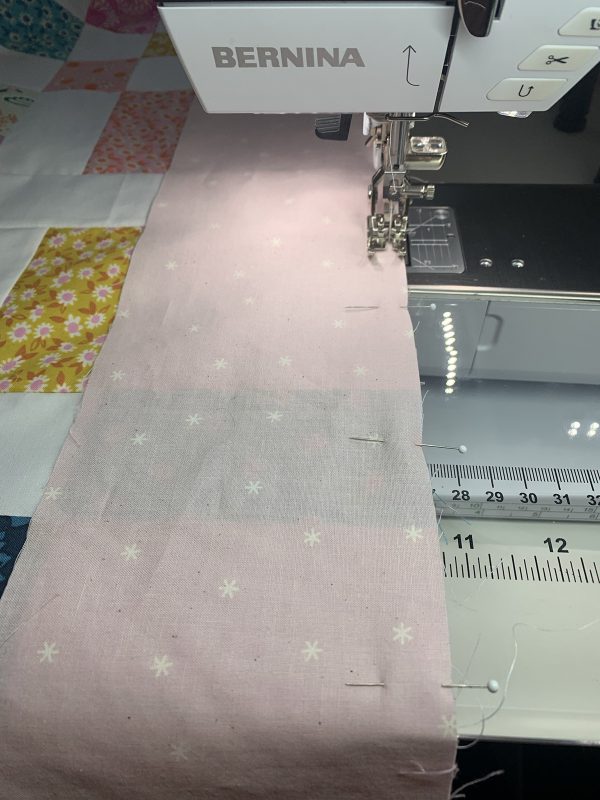
While you are sewing, don’t look at the needle. Keep your focus on the stitch plate mark and the pins so you don’t sew over them.
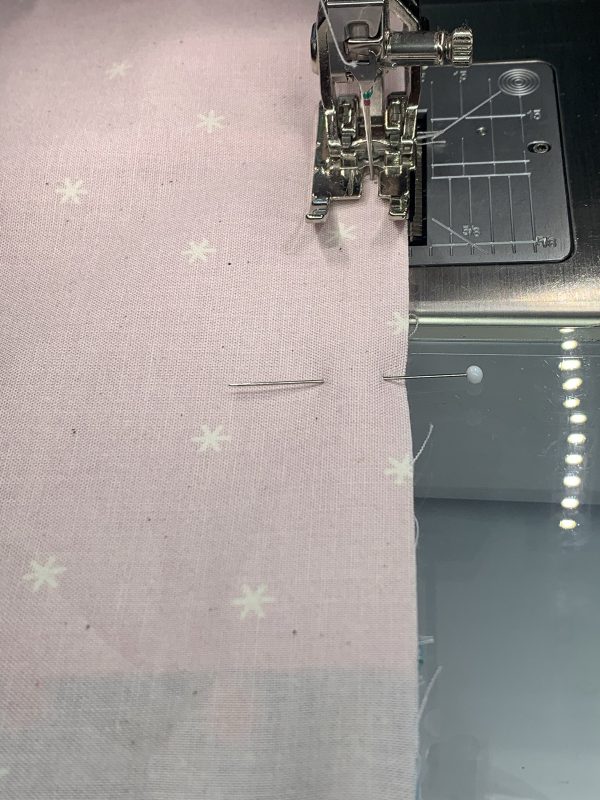
Press seams toward border fabric. Do the same for the remaining two borders.
Beautiful – another outdoor quilt picture!
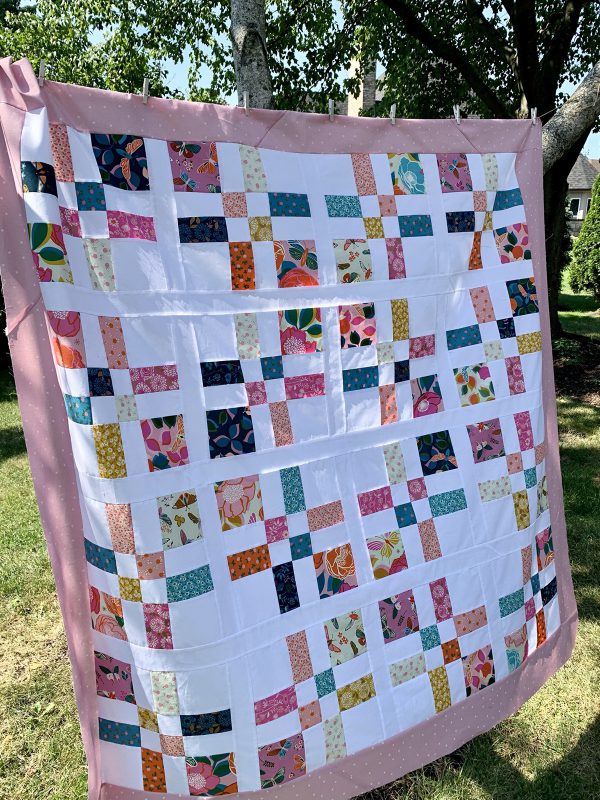
Prep for Quilting
Piecing Quilt Back
Before we start quilting the top, we need to piece the back. You will need 4 yards of fabric. I am using Spark fabric in the color Shell. Cut the 4 yards in half so you have a set of 2 yards by WOF. Then cut one piece to 40” width and the other to 33” width so you have the following dimensions:
- 40” x 72”
- 33” x 72”
Sew the two large pieces together with 1/2” seam allowance and press open. Yes, press this seam open. The open seam is better on the back for quilting. Cut the batting to the same size as the backing which is 72” x 72”.
Basting
Some quilters baste with a temporary spray adhesive; some quilters baste with a long basting stitch by hand or machine; and some quilters baste with basting pins. I like to do a combination of basting with a spray adhesive and pinning. I have a fold-away hobby table I use to prepare my quilt for quilting. I use large binder clips to secure the quilt layers to the table edges one section at a time. Then, I pin the section of the quilt that is on the table. Depending on the size of the quilt, I might have to re-clip and pin once or several times. Following are details of the process and pictures. This is what works for me, but it’s certainly not the only way!
First, lay down the backing wrong side up. Add binder clips along table edges. Do not stretch the quilt top! You don’t want it too relaxed, but you don’t want it too taut. I know that sounds vague and relative, but think about the stitching. If the fabric is too relaxed you could end up with folds, and if it’s too taut you will have puckers.
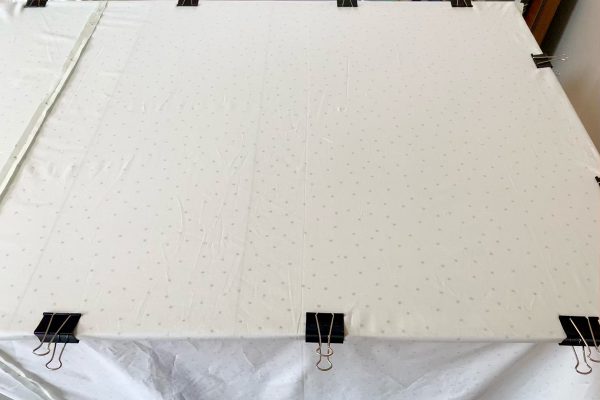
At this point, I lightly spray with a temporary adhesive spray, and I make sure I have the windows open. You don’t need to use the spray, but this way I don’t need to use as many pins!
Place the batting on top of the backing and clip. You can add new clips and then remove the first set of clips. Or you can simply remove the first set and use them to re-clip batting with backing.
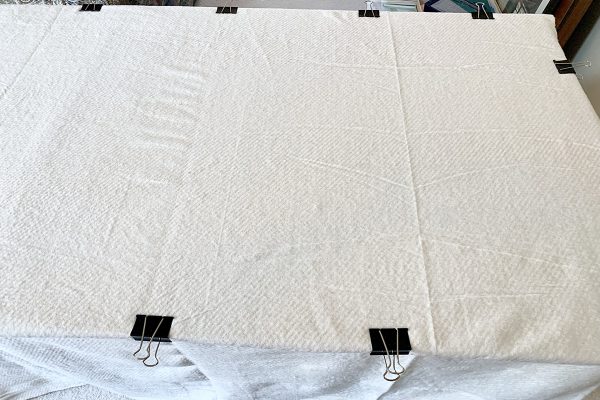
Next, apply another light spray and place the quilt top over the batting. The backing and batting should extend beyond the quilt top a few inches.
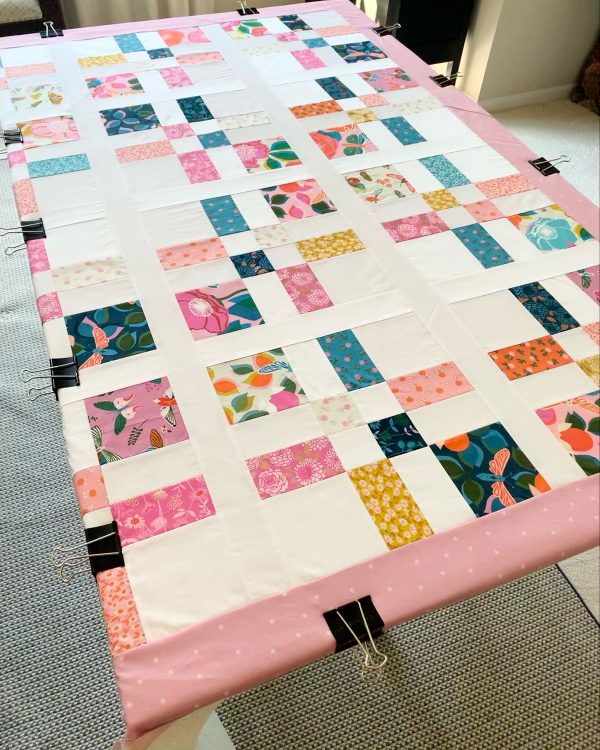
Then, I pin and pin and pin! I have pins that are slightly curved and a tool called Kwik Klip made especially for quilting prep. Both make pinning so much easier and faster.
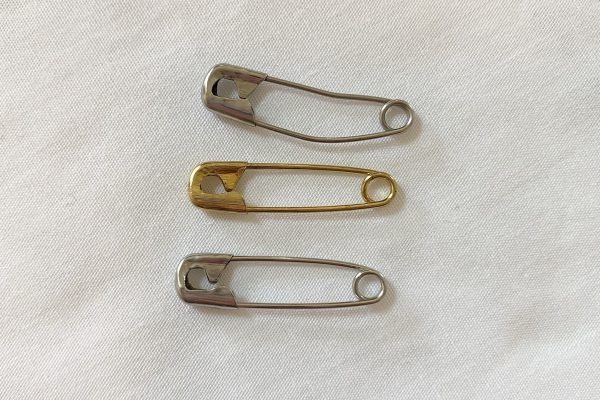
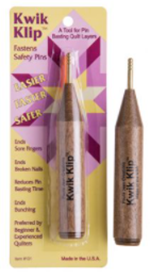
I pin about every 5” – 6” and sometimes more depending on how much basting spray I use. An easy, general reference is to place your hand on the quilt. The pins should be about the distance of your hand. I did some light spray basting between the quilt layers so I am not using as many pins as someone would use who didn’t use spray adhesive. Remember to pin the border too!
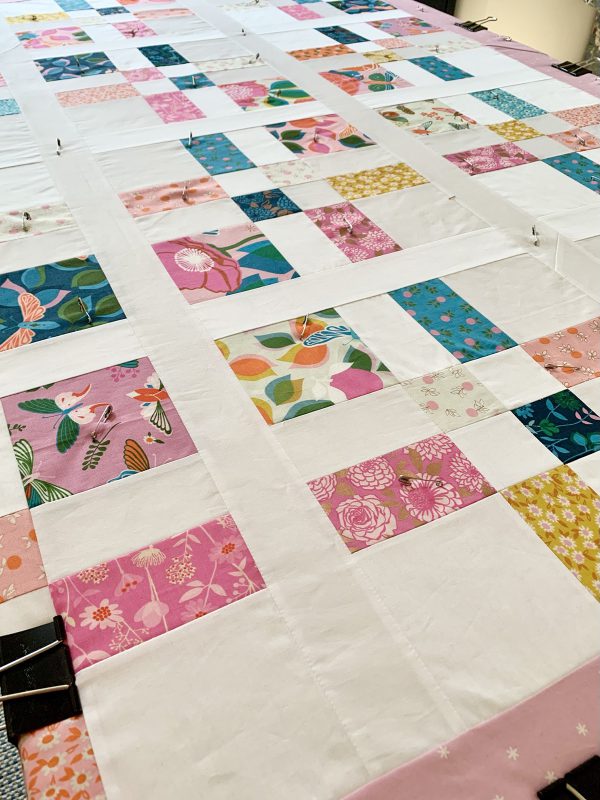
When you are done pinning this section, remove the binder clips and move the quilt to the next section. For this size quilt on my table, I only needed to move the quilt once.
Now you are ready for machine quilting! Next week we will learn directional quilting with the BERNINA Walking Foot #50. I can’t wait to show you how easy it is to quilt with the Walking Foot!
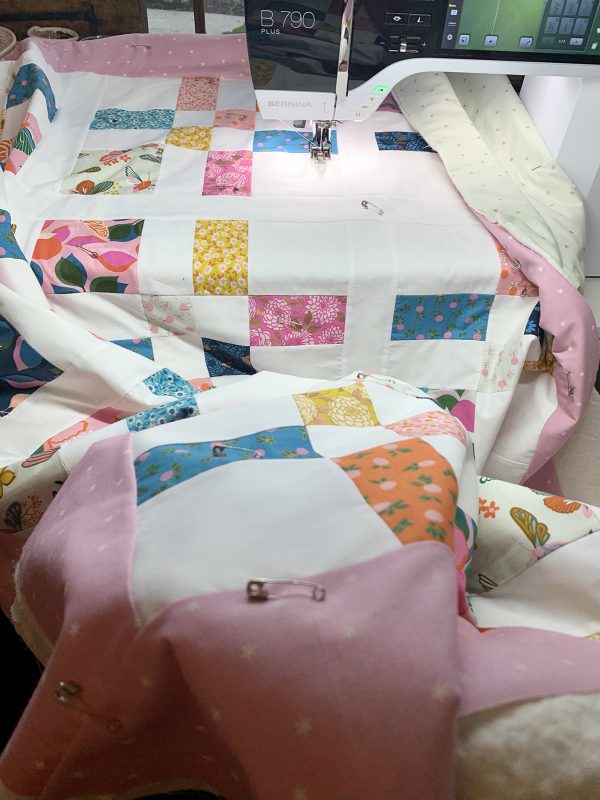
If you missed the first three posts, check the links below!
Stay Gold Quilt Along
- Part 1: Prep and Cut Fabric
- Part 2: Counterchange Cross Blocks
- Part 3: Finish Blocks, Layout and Sashing
- Part 4: Finish the Quilt Top and Quilting Prep
- Part 5: Straight Line Quilting
- Part 6: Binding and Bonus
